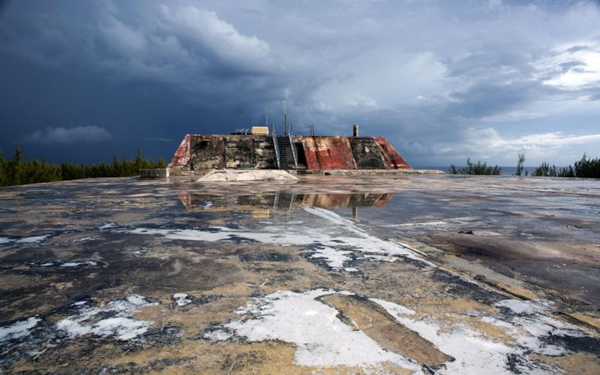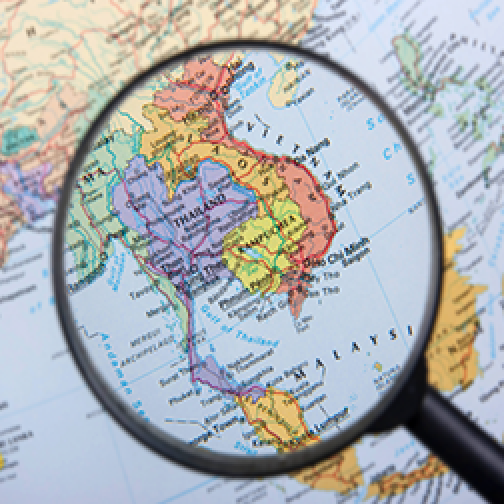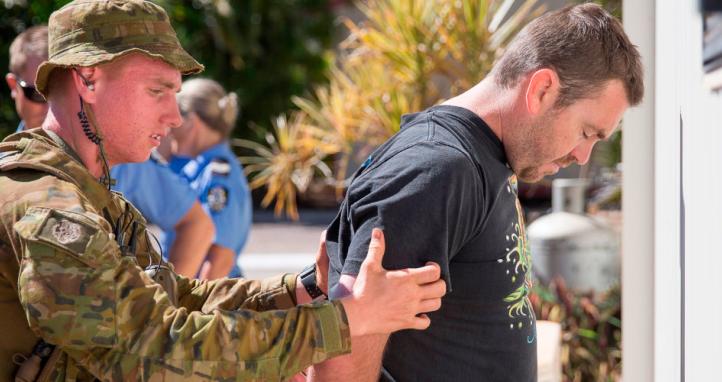Facts and figures
The ‘Know Your Region’ series is designed to support unit and individual professional military education on the Indo-Pacific region. It’s important for all serving members of our military to have a foundational knowledge of the countries and issues in the Indo-Pacific.
Nuclear testing in French Polynesia
Nuclear testing in French Polynesia remains one of the most controversial chapters in the history of nuclear proliferation. The program began in 1966 and spanned over three decades, profoundly impacting the region and the local population. The French government, seeking to establish itself as a major nuclear power, chose the remote islands of French Polynesia after Algerian independence rendered its previous test sites in the Sahara Desert unusable.
French Polynesia was chosen for several reasons. Its geographical isolation in the South Pacific reduced the likelihood of immediate international scrutiny and minimised the perceived risk of fallout affecting mainland France or its neighbours. Also, as a French overseas territory, French Polynesia was powerless to resist.
The first nuclear test, codenamed "Aldébaran," was conducted on July 2, 1966, at Moruroa Atoll. This test marked the beginning of a series of experiments that would ultimately number 193. The tests were conducted at two sites: Moruroa and Fangataufa Atolls in the Tuamotu Island group. Initially, the tests were atmospheric, which caused widespread radioactive fallout. However, in 1975 under growing international pressure, France transitioned to underground testing. While these tests reduced airborne radiation, the subterranean detonations raised concerns about long-term environmental contamination, particularly the surrounding fragile coral reefs. The bombs varied in size, with yields ranging from a few kilotons to over 100 kilotons. This made some tests much more destructive than the bombs dropped on Hiroshima and Nagasaki which yielded approximately 15 kilotons each.
Protective measures during the tests were minimal and often inadequate. French military personnel and local workers were sometimes given basic protective gear, such as goggles or masks, but they were insufficient to shield against radiation exposure. In many cases, the local population were not evacuated or warned about the dangers, leaving them nowhere to go and nowhere to hide.
The medical and environmental consequences of the nuclear tests were devastating. Radioactive fallout from the atmospheric tests spread across the Pacific. Studies have documented elevated rates of cancers, thyroid disorders, and other radiation-related illnesses among French Polynesians, as well as the servicemen who worked in and around the test sites. In 2010, the French government set up a French nuclear compensation commission to process compensation claims (CIVEN), the rate of approved claims has been low (around 20%) and the process to submit the claims has been arduous and embroiled in red tape. Most of the rejected applicants had no means of knowing why they were turned down, as the commission provided no justification for its decisions, which were not made public.
One atmospheric explosion in 1974, codenamed Centaure, shows that all the people of Tahiti, along with neighbouring islands from the Windward group, were exposed to a dose above 1mSv – the threshold amount officially required to claim compensation. Despite this, only 63 Tahitian civilians have so far been compensated.
The environmental degradation was also severe; the underwater explosions destroyed large swathes of coral reefs and disrupted the ecological balance in the region. The radioactive contamination created exclusion zones around the test sites where access remains restricted due to high radiation levels. As the local population on the surrounding islands relied on fishing for their diet and income, their health and livelihoods also suffered. Even now, the contamination has raised long-term concerns about the safety of consuming fish from the region.
The tests provoked strong reactions both within French Polynesia and globally. Locally, the tests were met with increasing resistance as awareness grew about their harmful impacts. On the international stage, they were condemned by neighbouring Pacific nations, environmental organisations, and anti-nuclear movements. Protests and diplomatic pressure intensified, particularly during the 1990s when France briefly resumed testing under President Jacques Chirac.

France formally ended nuclear testing in 1996 in response to mounting criticism and signed the Comprehensive Nuclear-Test-Ban Treaty (CTBT). The cessation of testing was seen as a victory for the anti-nuclear movement, but it did not immediately address the lingering impacts on French Polynesia. Activist groups, such as Moruroa e Tatou, emerged at the turn of the century to demand accountability and reparations from the French government. For many Polynesians, the tests represent a stark example of colonial exploitation, where the interests of a distant government were prioritised over the well-being of local communities. Many people still struggle with the health issues related to radiation exposure and art, literature, and oral histories reflect the deep sense of loss among the Polynesian people.
When thousands of documents concerning the French Polynesian nuclear tests were declassified in 2021, independent researchers and local activists worked to uncover the truth about radiation exposure levels and their long-term effects. Both were historically downplayed or miscalculated by the French Government who were reluctant to admit wrongdoing. Revelations that almost 95% of the local population were affected by the tests has sparked renewed calls for compensation and has helped to re-ignite the French Polynesian pro-independence movement.
Video:
Articles:
- French nuclear tests in the Pacific: the hidden fallout that hit Tahiti
- Moruroa Files
- Macron pressured to apologise for nuclear tests in French Polynesia – France 24
- Harrowing Report Finds 110,000 People Were Contaminated by French Nuclear Tests : ScienceAlert
- 50 years after Mururoa protests: Still no idyllic Pacific stopover | Yachting New Zealand
Know your region
Know Your Region series gives you a shortcut to understanding other nations in the Indo-Pacific region.









